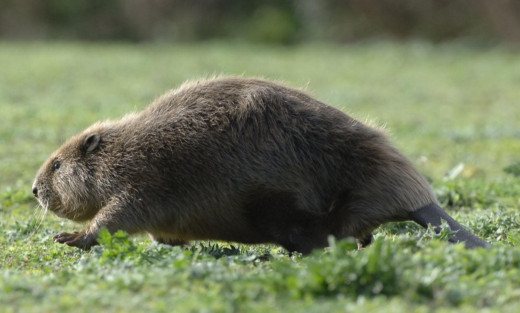The reintroduction of a long-extinct animal has divided Scotland’s countryside interests like no other over the last several years.
The Tayside Beaver Study Group (TBSG) has begun a programme of live trapping to monitor the movements and health of local beavers along the River Ericht and the Vale of Strathmore.
The TBSG is in place to objectively collect data to present to the Scottish Government on the Tayside beaver population and their impacts, both positive and negative.
The group has appointed a project officer as a liaison for those who see animals in the wild and Helen Dickinson spoke to The Courier about what her job will entail.
What sort of things are you looking to learn from the live trapping?
“We want to establish the health condition of the population across Tayside. During health screening we take general measurements, including weight and tail dimensions, to establish the condition of the animal and take samples to enable testing for various native and non-native diseases.
“With genetic testing, we can understand more about the origin of the population, including which part of Europe they may originate from and how individuals across Tayside are related.
“We live trap the beavers and they’re taken to a veterinary facility (at Edinburgh Zoo), where they undergo health tests and we take blood and hair samples, which will allow us to analyse their DNA. In terms of the actual procedure, it takes a couple of hours at most, at which time the beaver will be under anaesthetic.”
Have your early attempts at live trapping been successful?
“We’re still in quite low numbers (of specimens). Relatively speaking, we’re in the early stages of the trapping programme and have a fair way to go. The logistics of finding somewhere we can trap are difficult.
“We have to think about several things, including the welfare of the beaver. We have to be able to have good access, so we can remove them from the trap quickly to keep distress to a minimum and we can’t have traps in very public locations as there is a risk of possible public interference.”
Have you seen any specimens that are dead already? Has it been a problem since the wild beavers came about?
“I am unsure of how many, if any, beavers have been shot and killed. If it is happening, we’re not always in the loop.
“The study group is trying to promote practical non-lethal ways of dealing with the impacts of beavers on land use and we want to encourage landowners to get in touch to discuss any problems.
“We have to explain that the legal issue around beavers is not straight forward, currently it’s not illegal to kill a beaver but it is illegal to possess a live or dead beaver without the appropriate licences from SNH.”
Who should a troubled landowner contact as their first port of call?
“They should contact me as the representative of the study group. I am able to undertake site visits to document the problem and discuss methods of minimising the impacts of beaver activity and as the project progresses we hope to offer more advice on various mitigation methods; this information will be available on the website and through contacting me.
“At some point in the near future, we’re going to release a questionnaire to landowners and land managers who have beaver activity on their land. This will allow us to gather information on the impacts they feel are as a result of beaver activity, both positive and negative.
“During site visits, I am able to collect this information as well.”
* Helen Dickinson by email at tayside_beavers@snh.gov.uk.
